How do you improve hamstring flexibility
On page cat links
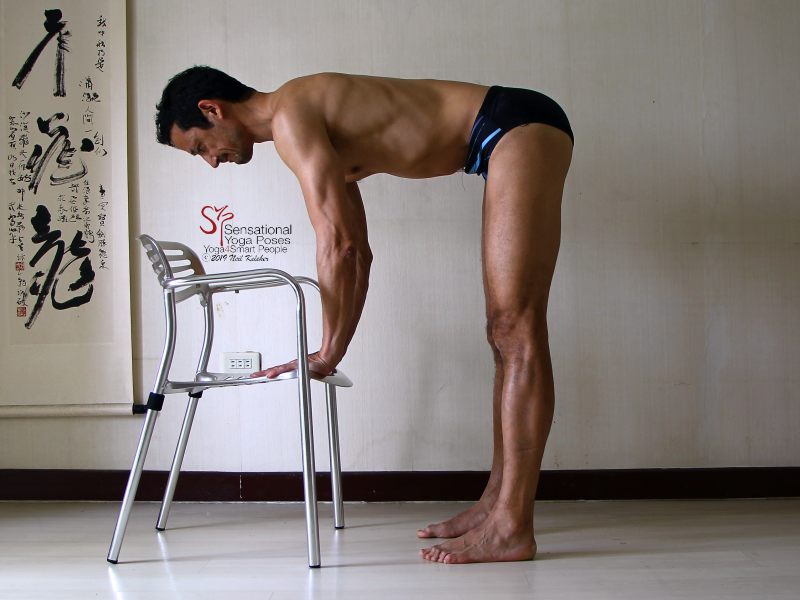
If you want to touch your toes with your knees straight then you need to improve your hamstring flexibility.
How do you go about doing that?
On page cat links

If you want to touch your toes with your knees straight then you need to improve your hamstring flexibility.
How do you go about doing that?
You can use gravity in two ways to help improve hamstring flexibility. If you relax your hamstrings, you can use gravity to help stretch your hamstrings passively, or with a relaxed stretch. Gravity provides the stretching force.
An alternative is to use your hamstrings against gravity. This can be simply to resist and strengthen the hamstrings and then while relaxing them allow your ribcage to sink closer to the floor and your thighs. Or you can activate your hamstrings against gravity but then while keeping them active, gradually lengthen them (allow them to lengthen). This could be thought of as a resisted hamstring stretch.
The hamstrings are a multi-joint set of muscles. They are poly-articular. They cross and act on both the back of the knee joint and the back of the hip joint.
In a standing forward bend they can be used to resist forward bending at the hips, or they allow a slow and controlled descent into a standing forward bend. In both regards they can work with the gluteus maximus muscle.
An important point to note about muscles in general is that in order to activate, they need an opposing force to work against. If an externally provided force is absent, that force can be provided by body weight (and gravity). It can also be provided by opposing muscles.
When opposing muscles work against each other, they not only create sensation, they also create stability. When foot and ankle muscles work against each other they help to stabilize the foot, ankle and shin bones.
If you are standing, then this stabilization affect is emphasized by the weight of the body pressing down through the feet.
Consider this, with the feet and ankles stabilized, and bearing body weight, all bones of the foot act as anchors for muscles that attach to them. As a result, with feet and ankles stabilized, the shins or lower leg bones are also stabilized or anchored. This then gives the hamstring muscles a fixed endpoint.
With a fixed endpoint your hamstrings can either relax, and allow your upper body to tilt forwards. Or they can effectively activate and slowly lengthen as they allow your body to tilt forwards.
You could do a standing forward bend and support the weight of your upper body with your arms. If you can't touch the floor with your hands (as may be likely since you are trying to improve your hamstring flexibility so that you can touch the floor with knees straight) you can place your hands on yoga blocks, the seat of a sturdy chair, or against your shins.

Note that to help support your body weight your arms have to be active. Your hands have to be pressing into the floor (or a chair or yoga blocks). If you can feel your hands pressing the floor, that's a sure sign that they are indeed bearing some part of your body weight.
With hands on the floor, you may find that you can relax your hamstrings. From there you could allow your elbows to slowly bend, while continuing to use your arms to support your body weight. You then lengthen your hamstrings while keeping them relaxed.

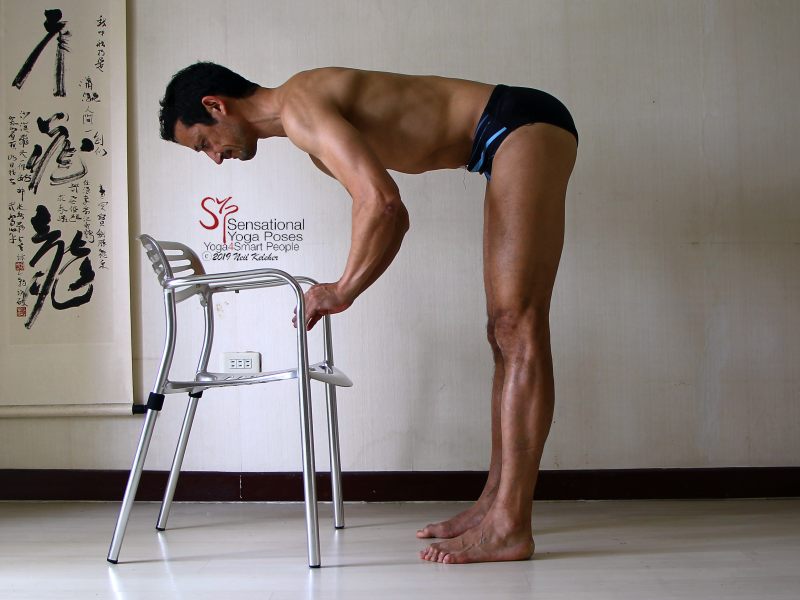
Another option is to activate your hamstrings so that your hands relax. Your hamstrings are now bearing your body weight. Lift your hands without allowing your body to move. Your hamstrings are now bearing the weight of your upper body. Put your hands down, then relax your hamstrings (or feel them relax). You can then try to bend your elbows to deepen the forward bend while keeping your hands relaxed.
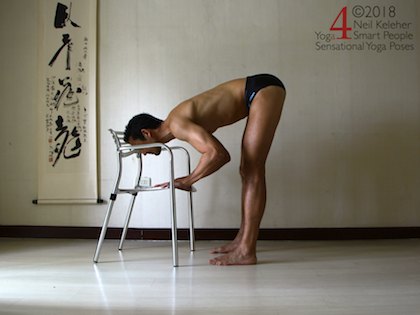
Another option is to try allowing your ribcage to lower while keeping your hands lifted and your hamstrings active.
I mentioned that muscles need an opposing force to work against. If you activate your calf muscles, in particular your gastrocnemius muscles, which cross the back of your knee joint, you may find that your quadriceps activate also.
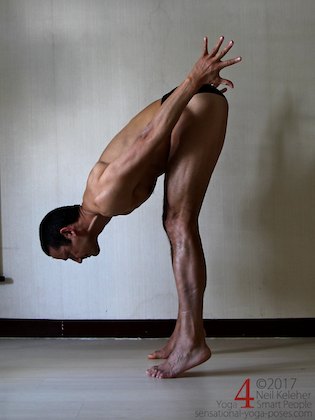
(One way to activate the calfs is to lift the heels while doing a standing forward bend.)
The quads in this case are working against your calf muscles to stabilize your knee joint. This may then give your hamstrings a fixed endpoint making it easier to forward bend and improve your hamstring flexibility. You could try activating your hamstrings and lengthening them, or relaxing them. Note that if you activate them, your quads may activate with greater force since now they are working against calfs and hamstrings.
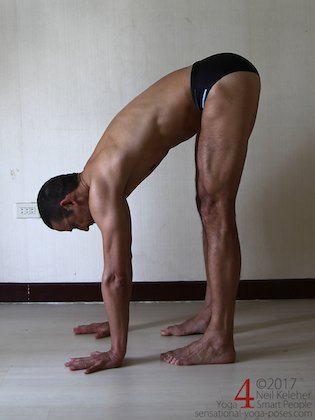
As mentioned, the hamstrings work on the back of the hip joint. They also attach to a prominent corner point of the hip bone, the ischial tuberosity or sitting bone. At the opposite corner of the hip bone is the ASIC or anterior superior iliac crest. This is the point of the hip bone you can feel to the side of and just below the plane of the belly button.
Standing upright, in order to activate your hamstrings, they'll need something to work against at the hip joint. Three hip flexors (sartorius, rectus femoris, tensor fascia latae) all attach at or near the ASIC. These are "long hip muscles".
To activate your hamstrings while standing it may help to activate these muscles also. Or they may activate automatically if you manage to self activate your hamstrings.
You may find that activating these muscles against each other gives your hips a feeling of stability. You can try maintaining this stability while slowly moving into a forward bend. As you get deeper into the forward bend, work at continuing to maintain hip stability. See if that helps you to deepen your forward bend and thus improve your hamstring flexibility.
To put the above into practice (and to see it in the context of yoga poses and stretches) check out the following links:
